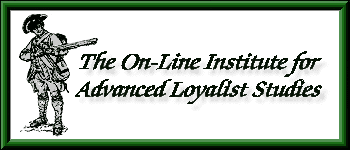

|
 |
A History of the Royal Highland Emigrants |
|
The Royal Highland Emigrants were the brainchild of Allan MacLEAN. Before the outbreak of hostilities, he formed a plan by which new Scottish emigrants from home would be given lands in America in secret exchange for a plan to bear arms for the British in the event of hostilities. At a given time, they would embody and serve alongside British troops. Given that the war broke out within weeks or days of formulating this plan, it really didn't proceed exactly as planned, and the regiment enlisted mostly former Highland soldiers who had settled in Canada and America, and recently arrived emigrants. In June of 1775 the first officers were commissioned at Boston, and they traveled about to raise their men in different places. In 1775 alone they recruited men in Boston, New York City, the Mohawk Valley, Canada, Nova Scotia, the Island of Saint Johns (PEI), Newfoundland, and North Carolina. The regiment, which drifted into two battalions because of the geographic distance between Quebec and Halifax, the two eventual headquarters and rendezvous, was to be modeled after the Royal Highland Regiment, the 42nd Regiment of Foot. This meant red coats faced blue, and all the Standard Scottish uniform clothing: i.e., bonnets, kilts, broadswords, pistols, etc. All these items were ordered for the regiment in 1776, but prior to that, the First Battalion, at Quebec, would be issued with Green coats from the clothing sent from England early on for Canadian regiments that were never raised. The 2nd Battalion, under Major and later Lt. Col. John SMALL, was headquartered in Halifax but in 1776 had detachments all over. One company was in Newfoundland, a detachment had been shipwrecked and captured off of Egg Harbor, New Jersey, some were on board the ships with Governor TRYON at New York Harbor, some were with General CLINTON in the South, others had been captured at Moore's Creek Bridge. Alexander MacDONALD's Letterbook, published as part of the Collections of the New-York Historical Society for 1882, gives a wealth of information regarding the organization of the regiment at this time and the frustration felt by having the unit so scattered. The 1st Battalion under Lt. Col. MacLEAN, would serve in Quebec during the siege and be the largest body of troops there after the militia. After the failed attack, dozens of the captured Rebels were enlisted into the Emigrants. Some served faithfully, some did not. A number who were apprehended deserting were sent to England and there given the choice of punishment or enlistment in the Africa Corps, for which they all opted. The 1st Battalion would remain in Canada the entire war, some few men serving only in raids. Most of their time was spent on garrison and work detachments. The 2nd Battalion at Halifax remained there when HOWE went off to take New York, but raised about 170 men from the prisoners taken at the Battle of Brooklyn in August of 1776. The regiment would later send some companies to join the garrison at New York, and recruiting parties were dispatched with the army to Philadelphia and the Siege of Charlestown. The Light Infantry Company also served in the 2nd Battalion of Light Infantry during the Siege of Charlestown. Eventually about 175 men, including the Light Infantry Company, were detached under General LESLIE's expedition against Virginia in October, 1780 and found themselves in Charlestown soon thereafter. At some point, either from the start or later on, they were joined by their grenadier company. They served with distinction in South Carolina, but wearing brown trousers rather than their plaids. The detachment suffered steady losses throughout the year, particularly at Eutaw Springs. In 1782 this detachment set sail from Charlestown for Jamaica, which they helped garrison. In August of 1783 these men embarked for home, first stopping at New York and then on to Nova Scotia, to join the men they left several years before. The corps, now a regular British regiment, numbered 84, was then disbanded at the end of the war.
Click here for ---> Regimental History Main Page More Royal Highland Emigrants History
The On-Line Institute for Advanced Loyalist Studies
|